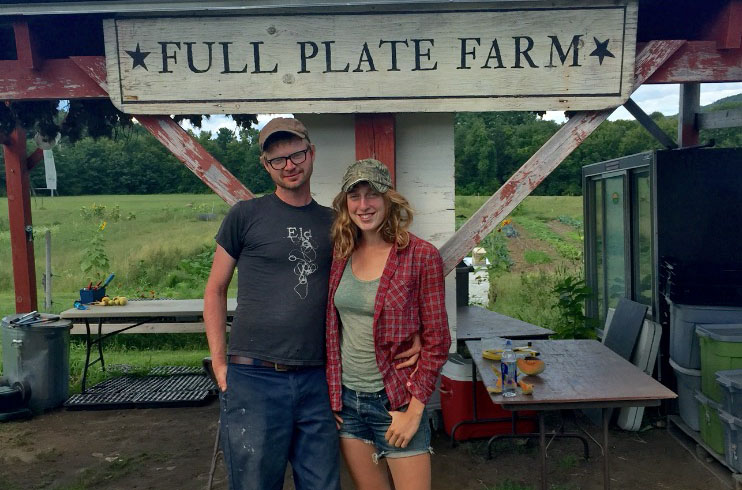By Travis Marcotte
It’s no secret that Vermont farmers are aging and that a significant amount of farmland in Vermont will change hands in the coming years. According to the American Farmland Trust, the average age of a Vermont farmer is 57 years old, and farmers at or above retirement age manage 30 percent of all land in production. Simultaneously, Vermont is one of a few states where the total number of farms is actually increasing, growing by about 5 percent between 2007 and 2012 to 7,338 farms. We know that there are both great challenges and opportunities ahead for Vermont’s agricultural sector as many beginning farmers transition to new land.
Luckily, Vermont has a robust network of experienced service providers to help farms navigate finding new land, starting their businesses, and staying successful as beginning farmers.

At the Intervale Center, we work with 70 to 80 farms every year, providing business planning support for farms from the start-up phase through exit transfers, and everything in between. Over the past few years, we have seen an increase in demand for specific land access technical assistance—that is, helping new farmers acquire land so they can build or grow their businesses and continue to contribute to Vermont’s agricultural economy. This might mean moving from rented land to their own land, co-locating on a property with other types of enterprises, buying land and starting a farm business concurrently, or entering into long-term leases on working lands owned by someone else. Regardless of the specific land access scenario, we’ve learned that it requires patience, finesse, and creativity to be successful.
Success on Farms
One of the new farms we worked with last year is Full Plate Farm, a CSA run by Laura Hecht and Matt Crowley. After renting land at the Vermont Agriculture Business Education Center for a few years, they were chosen to purchase a 150 acre conserved property in Dummerston through the Vermont Land Trust’s Farmland Access Program, in large part because of their extensive experience and vision for the land.
“It feels like we’ve been given this gift in a way,” Laura says. “Even though of course we’ve worked really hard over the past 10 to 12 years to get to where we are—it feels like we are blessed to have this land. [Having access to conserved land] is what made it possible for us to even consider farming in this part of Vermont.”
To help through the transition period onto their new land, Laura and Matt worked with our Success on Farms program through the Vermont Farm and Forest Viability Program. According to Laura, it has been hugely helpful to work with Sam Smith, farm business specialist at the Intervale Center.
“Pretty much every question I’ve had along the way, I’ve asked Sam and he has answered,” Laura says. “One of the major things that Farm Viability has helped with is paying for our bookkeeper who has been teaching me how to use Quickbooks—we couldn’t have afforded to do that on our own. It has been hugely important to have professional help from Sam as someone who is a sounding board.”
Laura and Matt now have a successful season under their belts on the new land and are enjoying having the land security to make long-term plans for their growing business.
In the coming decade, we will need even more support for innovative beginning farmers like Laura and Matt, and for the programs that support them, like VLT’s Farmland Access Program and the Intervale Center’s Success on Farms Program. There’s a lot of work to be done to ensure the smooth transition of Vermont’s working landscape to the next generation, but there is also an incredible amount of opportunity to grow successful new farms that serve as the heart of Vermont’s agricultural economy.
-Travis Marcotte is the executive director of the Intervale Center in Burlington.










